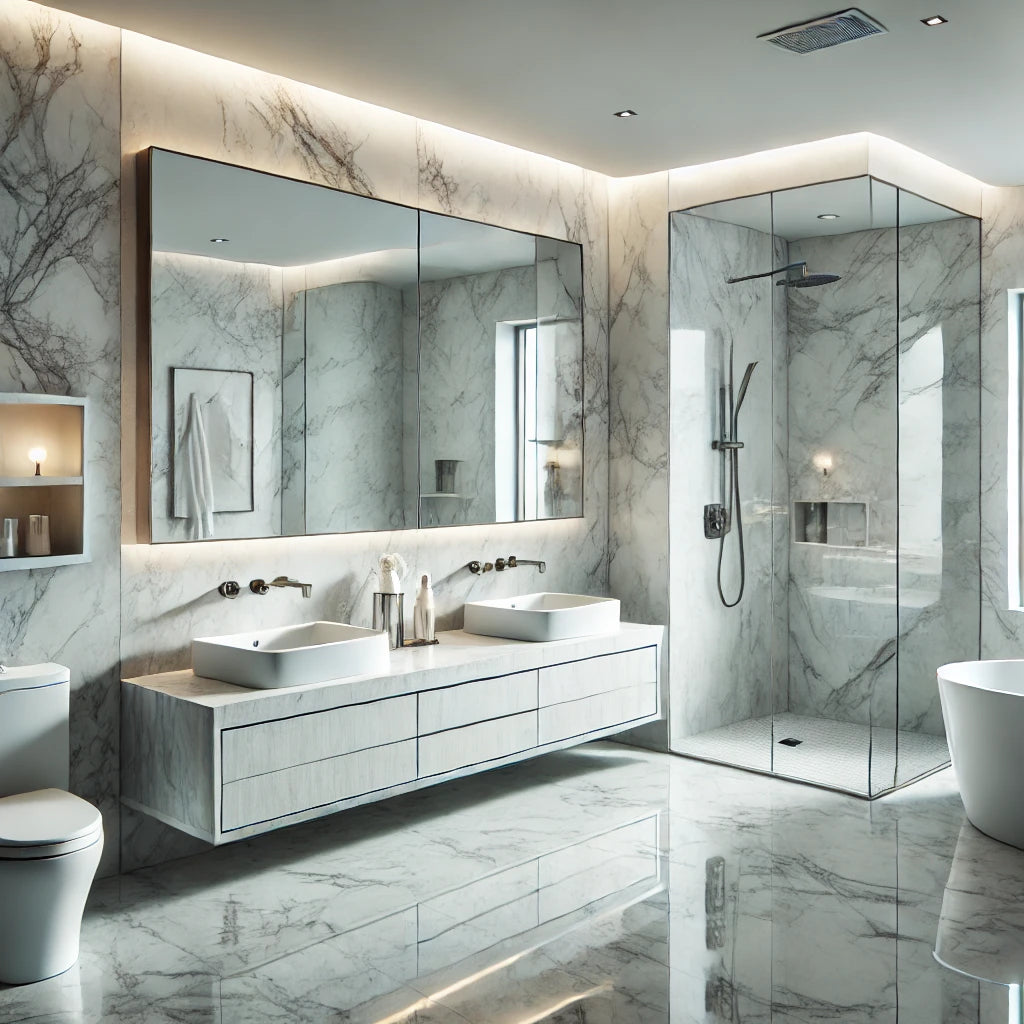
How to Choose the Right Faucet for Your Needs
Share
When it comes to selecting the perfect faucet for your home, the variety of options can be overwhelming. Whether you're remodeling your bathroom or upgrading your kitchen, finding the right faucet is crucial for both functionality and aesthetics. In this guide, we'll walk you through the key factors to consider when choosing the right faucet for your needs, covering everything from bathroom faucets and kitchen faucets to specialized fixtures like shower heads and bidet sprayers.
1. Consider the Purpose
The first step in choosing the right faucet is identifying where it will be used. Each area of your home has specific needs, and selecting a faucet that meets those requirements is essential.
-
Bathroom Faucets: When selecting a bathroom faucet, consider the type of sink and the overall design of the bathroom. Single-handle faucets are convenient and modern, while double-handle faucets offer more precise temperature control.
-
Kitchen Faucet: The kitchen is the heart of your home, and your kitchen faucet should be both functional and stylish. Look for a faucet with a sprayer feature for added convenience, especially when washing large pots and pans. A kitchen faucet with a sprayer can make your daily chores easier and more efficient.
-
Shower Faucet: Your shower experience greatly depends on the type of shower faucet you choose. Opt for a rain shower head for a luxurious spa-like experience or a multi-function shower faucet that allows you to switch between different water spray patterns.
2. Choose the Right Style
The style of your faucet should complement the overall design of your kitchen or bathroom. Here are a few popular styles to consider:
-
Modern: Sleek lines and minimalist design characterize modern faucets. These faucets often come with features like touchless operation or LED temperature indicators.
-
Traditional: If you prefer a classic look, traditional faucets with ornate details and elegant curves are a great choice. These faucets often feature cross handles or lever handles for a timeless appeal.
-
Transitional: Transitional faucets blend modern and traditional elements, offering versatility that fits various design themes.
3. Focus on Functionality
Functionality is a crucial factor when choosing a faucet. Here are some functional features to consider:
-
Kitchen Faucet with Sprayer: A sprayer adds flexibility and makes it easier to clean your sink or fill pots. Some kitchen faucets come with pull-down or pull-out sprayers, which can be especially handy.
-
Bathroom Sink Faucet: Consider whether you need a widespread faucet with separate handles for hot and cold water or a single-handle faucet for more straightforward operation.
-
Shower Head: The type of shower head you choose can significantly impact your shower experience. A rain shower head provides a gentle, full-coverage spray, while a high-pressure shower head offers a more invigorating experience.
-
Bidet Sprayer: If you're looking to enhance hygiene, a bidet sprayer can be a valuable addition to your bathroom. It's an eco-friendly option that can reduce the need for toilet paper.
4. Select the Right Finish
The finish of your faucet can enhance the overall look of your space. Common finishes include:
-
Chrome: A popular choice for its durability and shiny appearance. It's also easy to clean and resists tarnishing.
-
Brushed Nickel: Offers a softer, more subdued look than chrome and is excellent for hiding water spots and fingerprints.
-
Oil-Rubbed Bronze: Provides a warm, rustic feel and is often used in traditional or farmhouse-style bathrooms and kitchens.
-
Matte Black: A modern choice that adds a bold contrast to light-colored countertops and sinks.
5. Assess the Installation Requirements
Before purchasing a faucet, consider the installation process. Some faucets are easier to install than others, especially if you're doing it yourself. Make sure the faucet you choose is compatible with your sink or shower setup. For instance, a widespread bathroom faucet requires three holes, while a single-handle faucet only needs one.
6. Prioritize Water Efficiency
Water conservation is an essential factor in today's environmentally conscious world. Look for faucets with the WaterSense label, which indicates that they meet EPA criteria for water efficiency without sacrificing performance. This feature is particularly important for shower faucets and bathroom sink faucets, where water usage can add up quickly.
7. Budget Considerations
Finally, keep your budget in mind. Faucets come in a wide range of prices, and while it's tempting to go for the most affordable option, it's often worth investing in a higher-quality faucet that will last longer and offer better performance. Consider the long-term benefits of a durable, water-efficient faucet that suits your needs and complements your home's design.
Conclusion
Choosing the right faucet for your home is a decision that impacts both the functionality and appearance of your kitchen or bathroom. By considering the purpose, style, functionality, finish, installation, water efficiency, and budget, you can find the perfect faucet that meets your needs and enhances your space. Whether you're selecting a kitchen sink faucet, a shower faucet, or a bidet sprayer, taking the time to make an informed choice will ensure long-lasting satisfaction and performance.
For more tips on home improvements and choosing the right fixtures, explore our other blog posts and stay tuned for the latest in design trends and functional upgrades
